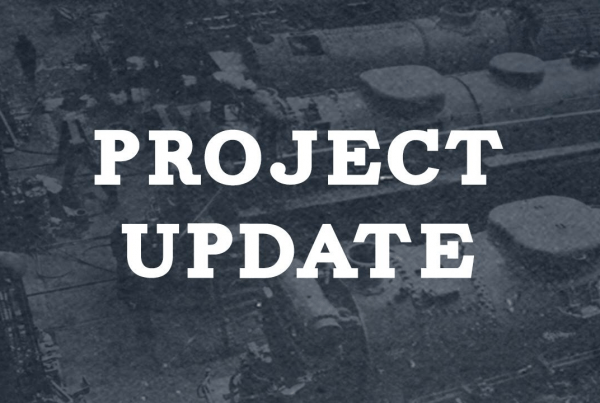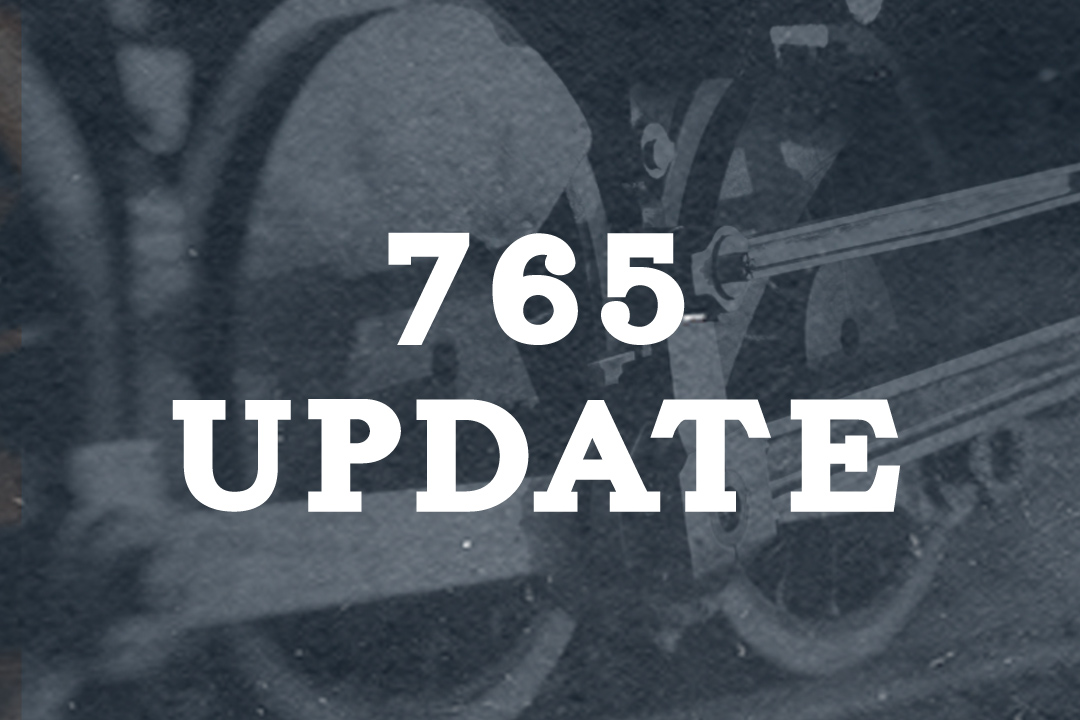Submitted by Steve Winicker.
LAST WEEKENDS SHOP ACTIVITY
Slow week with no help arriving. Apparently, the long season has worn everyone out. Sarah and I got the ash dumped out of the firebox and the ash pan dumped and drained the water in the tender. I also was able to unplug the drip drains on the blow downs. The rest of the week was spent mowing grass and collecting scrap metal for a trip to Omni-Source.
UPCOMING ACTIVITIES
Washing the engine, cleaning the rods, cleaning the inside of the firebox, removing arch brick and other of the usual clean up and inspection projects need to be done. If possible, this would be done when the weather was reasonably nice but good or bad weather it needs to be done. Any time over the next few weeks we will be working on getting these projects out of the way.
SAFETY SENSE
OSHA reports indicate that slips, trips, or falls cause almost 20 percent of all workplace injuries.
Slips and falls do not constitute a primary cause of fatal occupational injuries, but represent the primary cause of lost days from work.
Nearly all slips or falls have one or more of these factors as a cause….
Substandard walking surfaces
Surface contaminants
Footwear
Walking style of the person
Proper housekeeping and lighting of the working and walking surfaces can prevent most slips, trips, and falls. Sometimes surface contaminants can be very difficult to recognize as a hazard, but once the hazard is noticed, it must be barricaded off and cleaned up to prevent any risk of injury. Wearing the proper footwear for current weather conditions, as well as the surfaces being traveled, is important to prevent slips, trips or falls, and reduce fatigue.
Tripping hazards include cords, equipment, uneven floor mats, and unseen or unexpected objects. These tripping hazards should be picked up and put away after every use, and when they are in use be aware of the danger they could pose in a walkway, such as an electrical cord strung across a sidewalk or work area.
Slipping hazards include wet, icy, greasy, or soiled ground or floors. People need to wear the proper foot apparel appropriate for the job, such as steel toed and slip resistant. Use absorbents to immediately clean up any spills, especially oily material and corrosive materials.
A fall can happen from any surface higher than four inches such as ladders, lifts, large equipment, elevated walkways, ramps, or platforms. Falls may also occur into or through a hole such as the shop inspection pit. Most falls occur from heights less than 10 feet, so safety precautions need to be taken, even at lower heights.
Safe practices for individuals are as follows….
Utilize handrails or grab bars in areas where there are stairs or changes in elevation.
Use 3 points of contact when mounting or dismounting equipment (1 hand/2 feet) or (2 hands/1 foot).
In wet or icy conditions, take smaller steps and try to ensure your torso stays balanced over your feet.
Use slip-resistant matting or provide textured surfaces in potentially wet areas.
Minimize distractions to remain alert to hazards and avoid carrying bulky items that block your view.
Remove obstructions from travel areas, such as extension cords, power cords, hoses, boxes, or tools.
Stay alert to parts projecting from machines or equipment.
Utilizing proper safety practices, as outlined above, recognizing potential hazards and correcting them will go a long way in keeping our workforce safe and healthy.
SAFETY IS JOB 1
SAFETY FIRST ALWAYS


